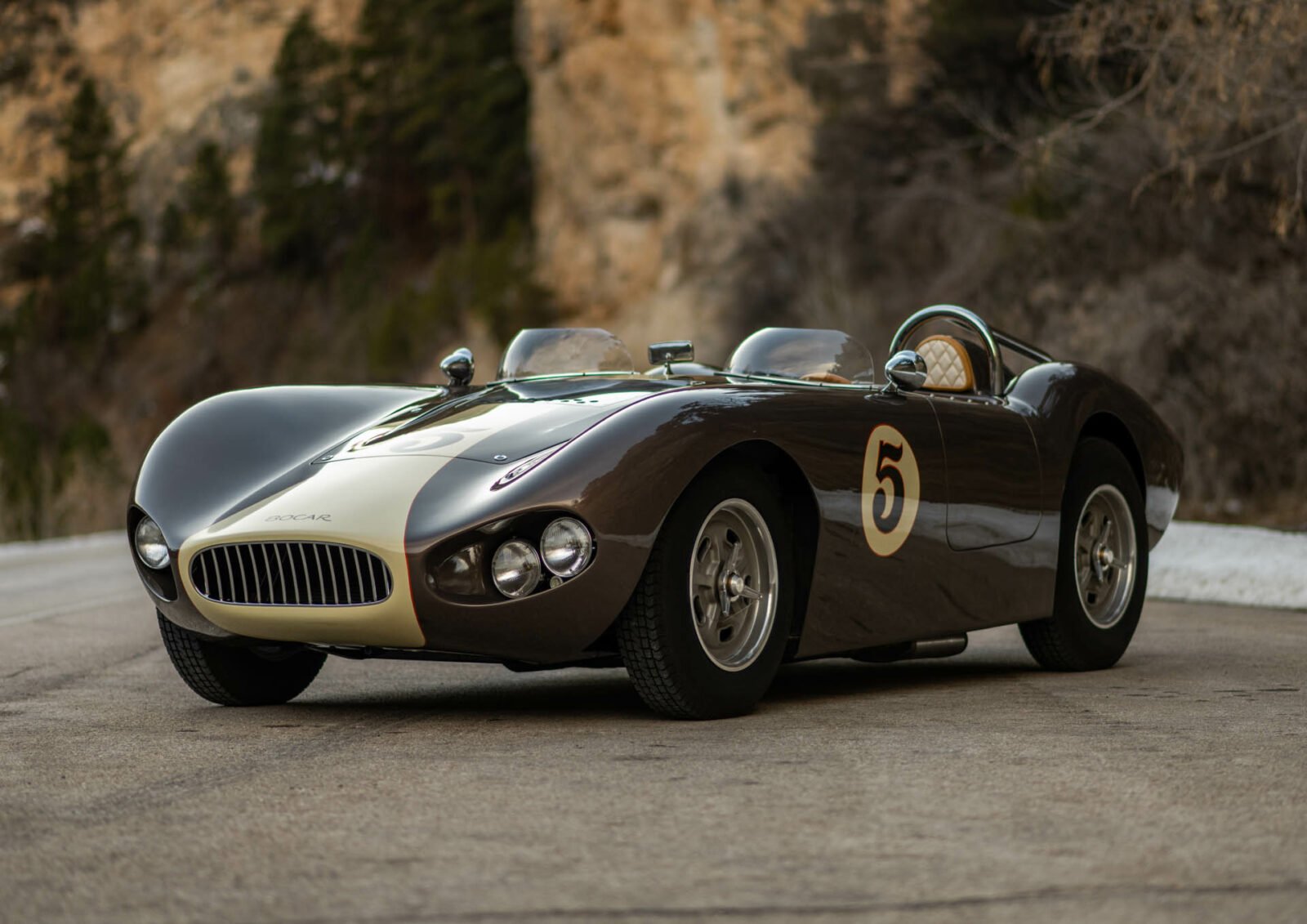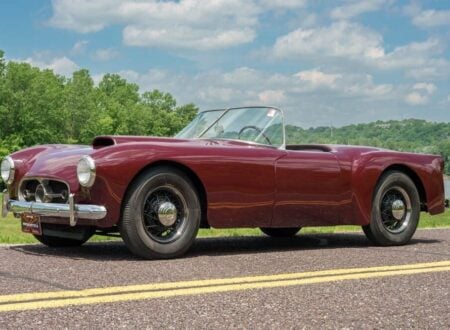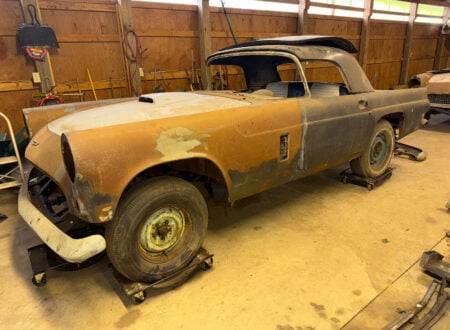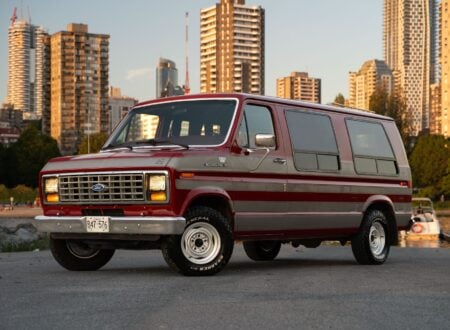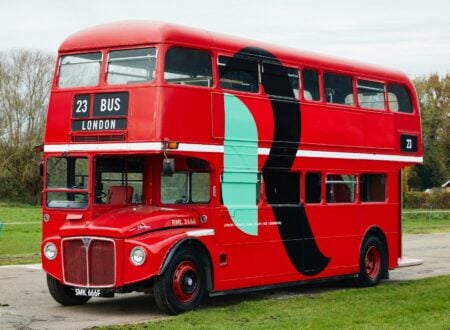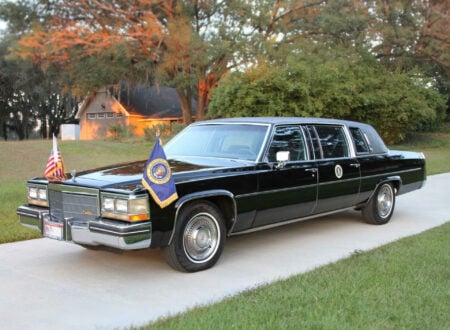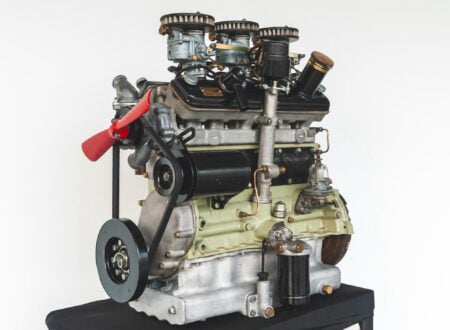The Bocar XP-5 was developed by American racer and low-volume automaker Bob Carnes in the late 1950s. He wanted an American-made sports car that would be faster than his modified Jaguar XK120 – a car he had fitted a Cadillac V8 to before nicknaming it the “Jagillac.”
Carnes developed a spaceframe chassis with a lightweight fiberglass body for his new car, then he sourced suspension, braking, and drivetrain components from common sports cars of the day. Despite the fact that only 15 or so examples of the XP-5 were made, it became a bit of a legend in 1950s sports car circles.
Fast Facts – The Bocar XP-5
- The Bocar XP-5 was Bocar’s first production car, it’s believed that ~15 were made in various configurations – no two are quite the same. The company name “Bocar” came from company founder Bob Carnes’ name – Bob Carnes.
- The XP series of cars started with the XP-1 which was followed by the XP-2, XP-3, and XP-4. These were all development cars, when Carnes felt he had the formula right he released the XP-5 as a low-volume production car.
- The original Bocar XP-5 used a chromoly tubular steel space frame chassis with a lightweight fiberglass body, modified VW suspension up front, Jaguar wire wheels, Girling drum brakes, with power often provided by a 283 cubic inch, 290 hp Corvette V8 engine.
- The Bocar XP-5 you see here was actually made decades after the originals, it was made by Bocar restoration expert Doug Karon who wanted a car for his own use. He developed a new chassis and combined it with a fiberglass body taken from moulds used on one of his restorations. The car handles better than the originals and it has a much better trimmed interior, and it’s now for sale.
The Bocar XP-5
In the early 1960s, when Carroll Shelby was developing the Shelby Cobra, he may have taken inspiration not only from Sydney Allard’s cars but also from Bob Carnes’ little-known Bocar XP-5. This was due to the fact that European-style lightweight sports cars with nimble handling were a perfect match for powerful American V8 engines, leading to the creation of some of the most potent sports cars of the era.
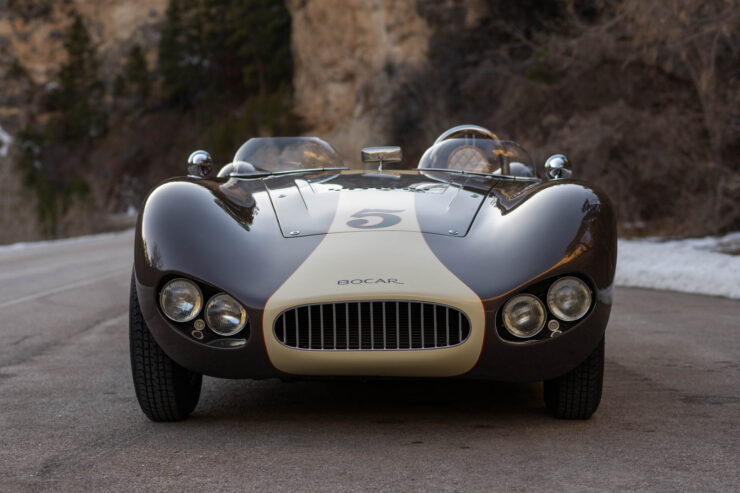

Bob Carnes’ first attempt at building a sports car from scratch was the XP-1 (eXperimental Prototype 1) in 1958, with a naming convention perhaps inspired by the Bell X-1 rocket plane. After the XP-1, came the XP-2, XP-3, and finally, the XP-4, with only around five known to have been built.
The Bocar XP-5 was introduced in mid-1959 and incorporated all the lessons learned from the earlier prototypes. The vehicle was built around a chromoly tubular steel space frame chassis and a fiberglass body, which was a cutting-edge material at that time, making it more feasible for smaller companies like Bocar to produce low-volume cars.
The majority of XP-5s were equipped with a 283 cubic inch Corvette V8 engine, generating 290 horsepower, and had a manual transmission that transferred power to the rear wheels. The car was just 34 inches tall and featured a low-profile windscreen. While the curb weight varied based on specifications, most cars weighed between 1,650 and 2,100 pounds.
An XP-5 was piloted by Art Huttinger in the first ever televised Daytona race in January of 1960. Amazingly Huttinger placed second behind the Jaguar D-Type being driven by Ed Rahal. This same car went on to set a speed record of 175 mph (282 km/h) on the beach at Daytona.
As one might expect, the XP-5’s performance was impressive. The Corvette-powered model could accelerate from 0 to 60 mph in under six seconds and achieve a top speed of around 160 mph. Racing versions of the car were highly competitive, with an XP-5 driven by Art Huttinger coming second in the first televised Daytona race in 1960, with a speed record of 175 mph set on Daytona beach.
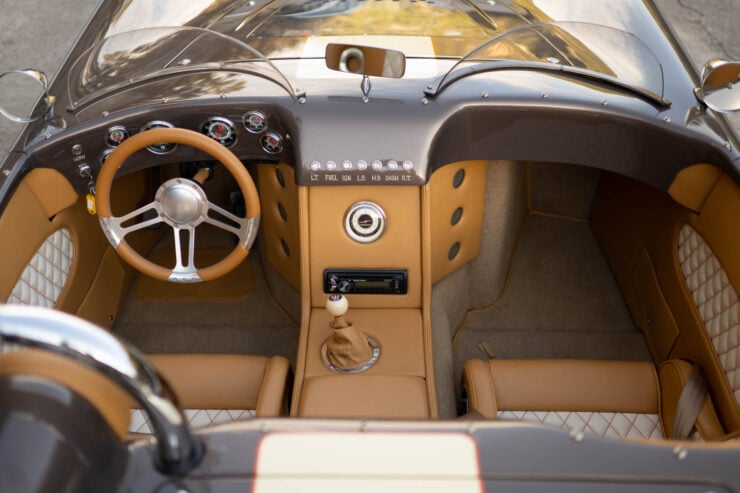

Carnes was developing the XP-6 and XP-7 when a fire destroyed the Bocar facility in 1962, resulting in the loss of all molds, jigs, and other necessary components required to build the cars, ultimately leading to the company’s permanent closure.
Today, surviving examples of Bocar’s original vehicles are highly sought-after, with asking prices even exceeding $250,000 USD in some instances.
The Bocar XP-5 – Redeveloped By Doug Karon
Doug Karon is probably the single most knowledgeable Bocar expert in the world, he’s restored four XP-5s himself, all to a very high level.
After he sold his last Bocar he quickly regretted it, and due to the rare nature of the cars he realized it could be some time until another came up for sale. As a result, he decided to use all that he had learned to build a new Bocar that included a slew of improvements under its composite skin to improve handling, braking, and overall performance.
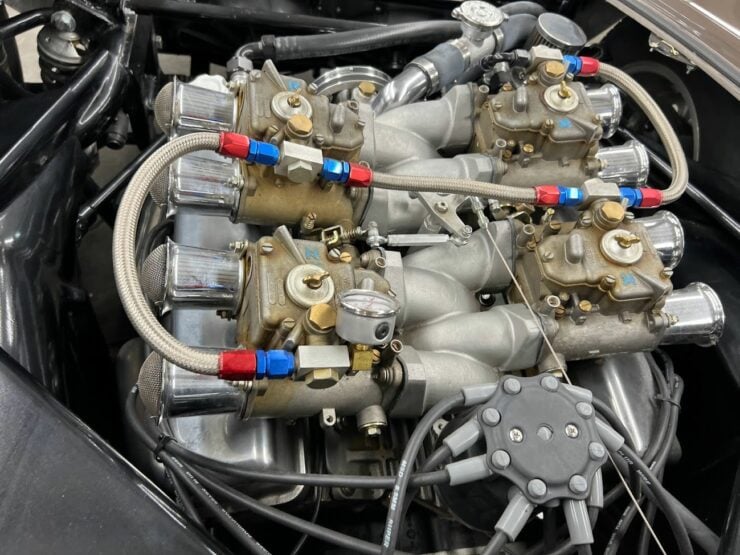

He started by developing a tubular steel chassis and then he made a new fiberglass body for the car using moulds he still had from restoring bodywork on an earlier 1959 Bocar.
Most XP-5s had VW/Porsche front suspension and a Corvette rear end which did limit their handling ability, Karon decided to go with an all new set up consisting of Mustang II front suspension and a Jaguar independent rear suspension, similar to that used on the E-Type.
The most common engine in the XP-5 was the 283 cubic inch Corvette V8 making approximately 290 bhp. Karon kept the engine in his car faithful with a Chevrolet V8, however it’s a more powerful 500 bhp 383 cubic inch Chevrolet small-block V8 fitted with an Inglese 8-Stack cross-ram intake with four Weber side draught carburetors.
Power is sent back through a T-10 four-speed manual transmission, and the car rides on adjustable coilovers on all four corners, it has Wilwood front disc brakes, inboard rear disc brakes (similar to the E-Type), and 16″ Halibrand-style knock-off wheels.
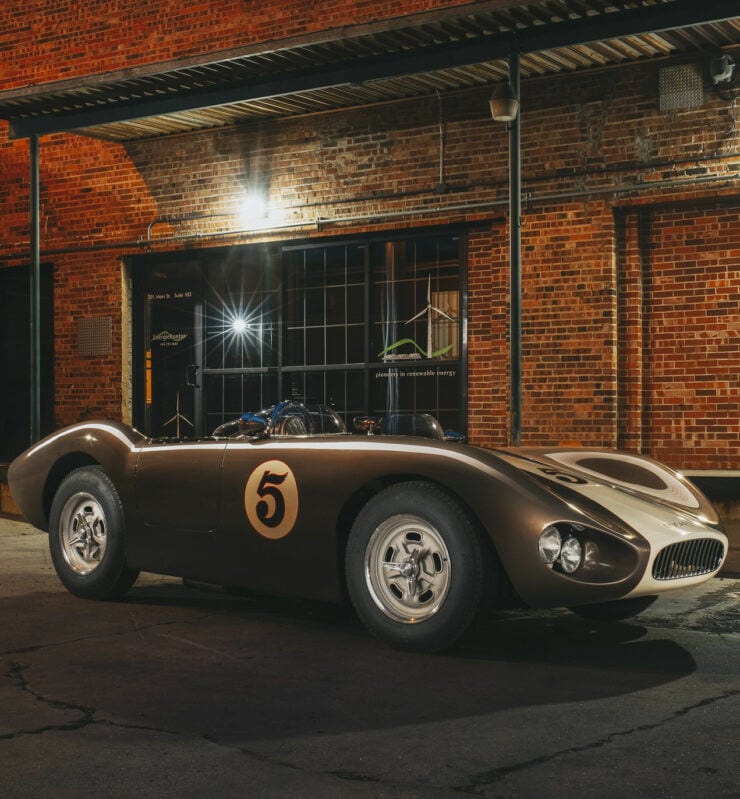

The interior of the car is vastly different to the originals, Karon decided to make the car a much more comfortable place to be than the bare-bones 1950s style racer originals.
The interior fit out was done by Hot Rod Interiors by Glenn of Glendale, Arizona. It has tan vinyl upholstery with white diamond-stitched inserts, a custom center console, tan square-weave carpets, a Hurst shifter, a Classic Instruments analog clock, and a Sony CD stereo.
The car now carries the number “5” as it’s the fifth Bocar XP-5 built or restored by Doug Karon, and although this car may not technically be a Bocar original I have a feeling that company founder Bob Carnes would unreservedly love it.
If you’d like to read more about this car or register to bid you can visit the listing here on Bring a Trailer. It’s being offered for sale out of Spearfish, South Dakota.
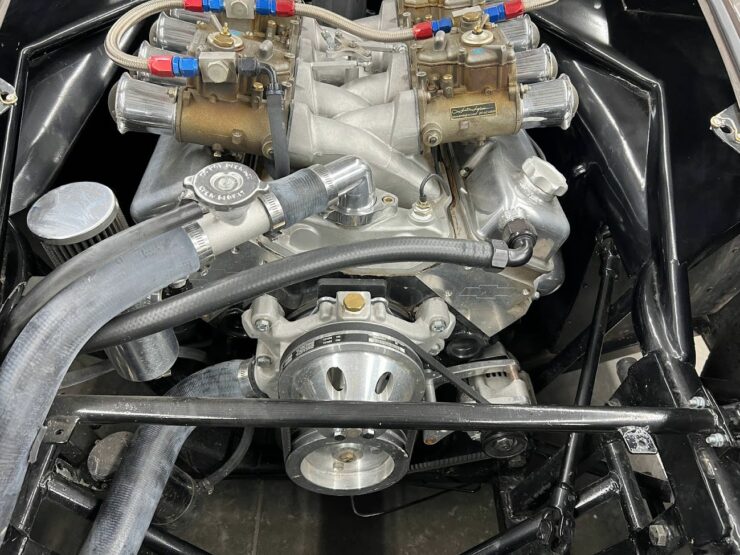
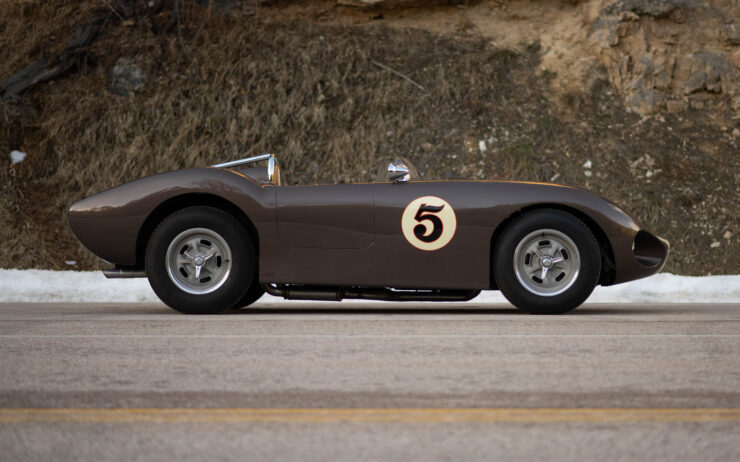
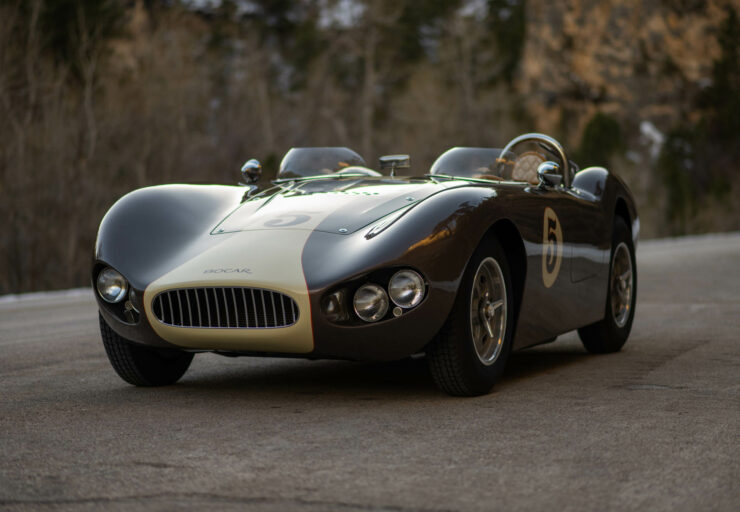
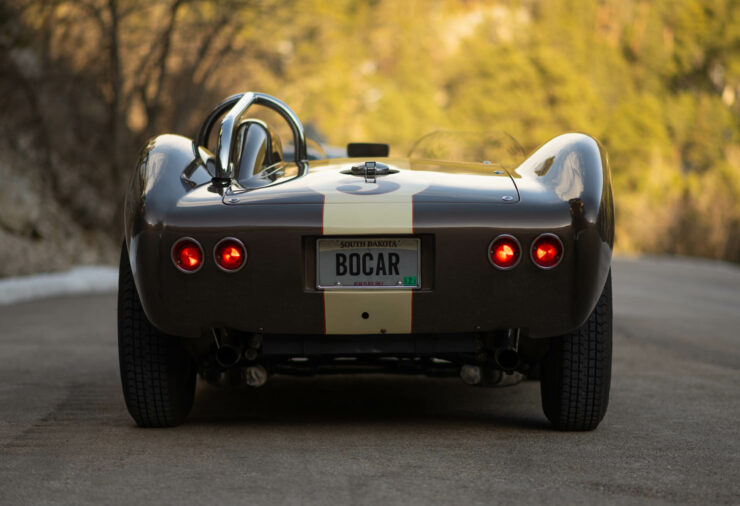
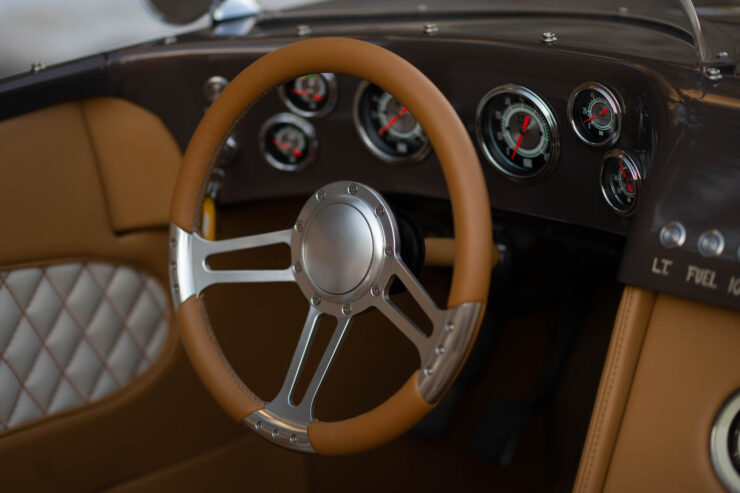
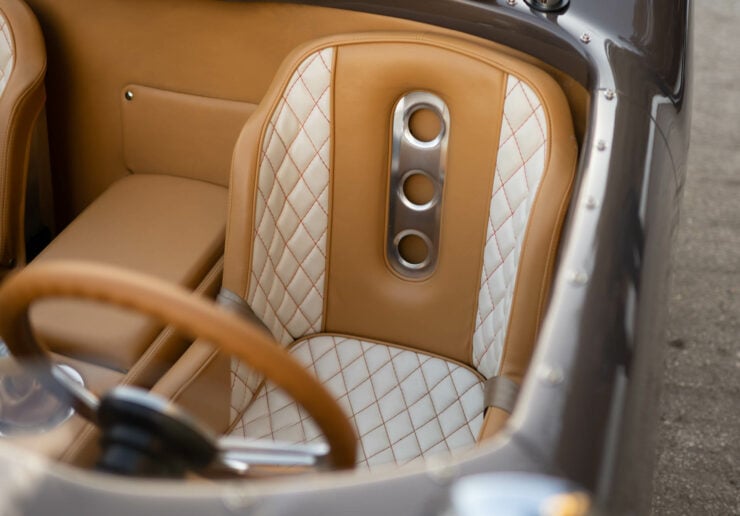
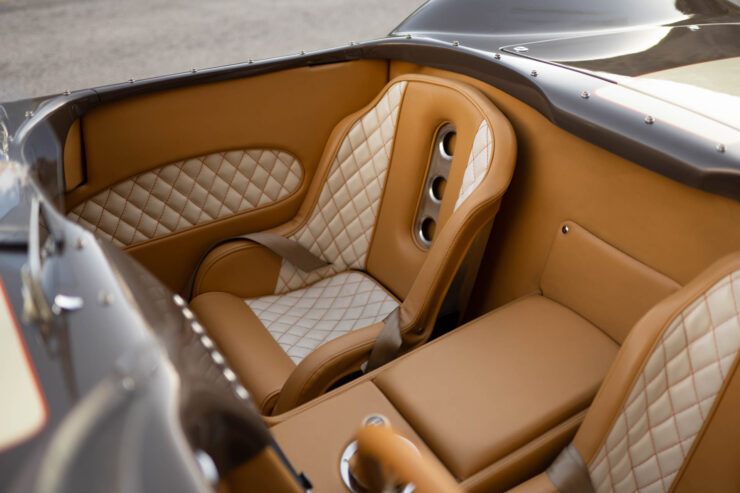
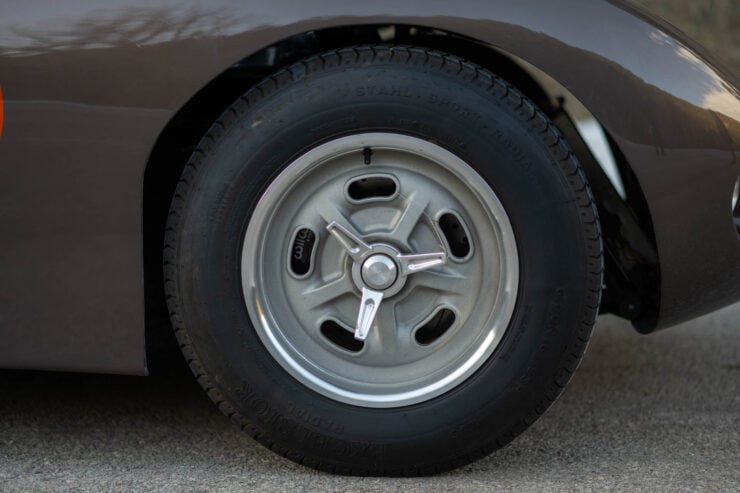
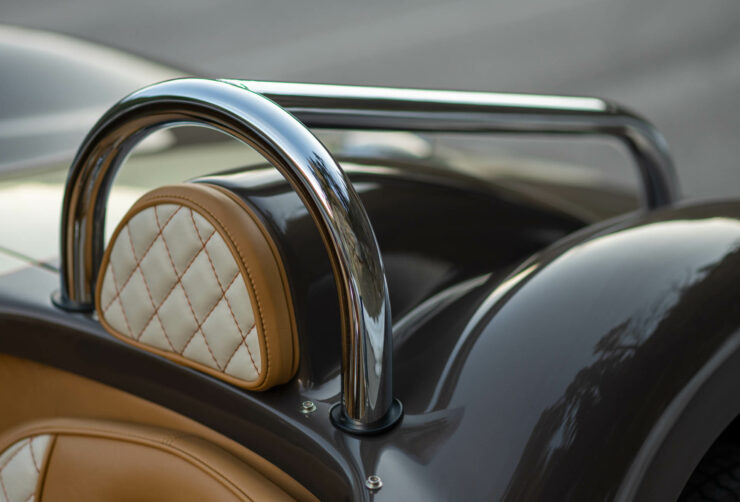
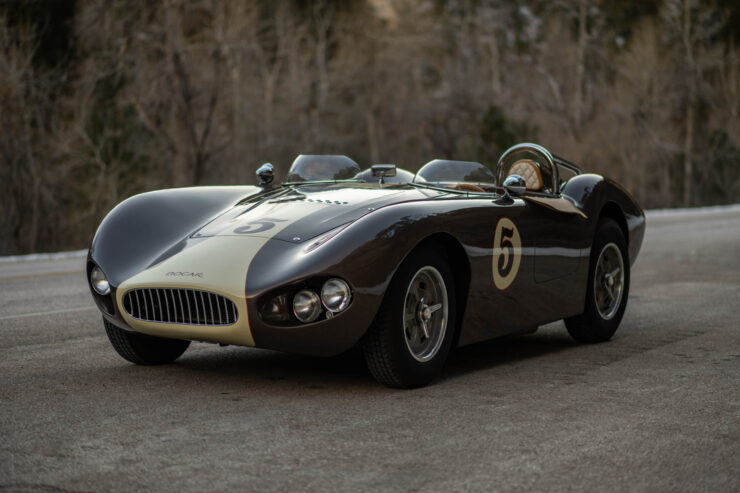
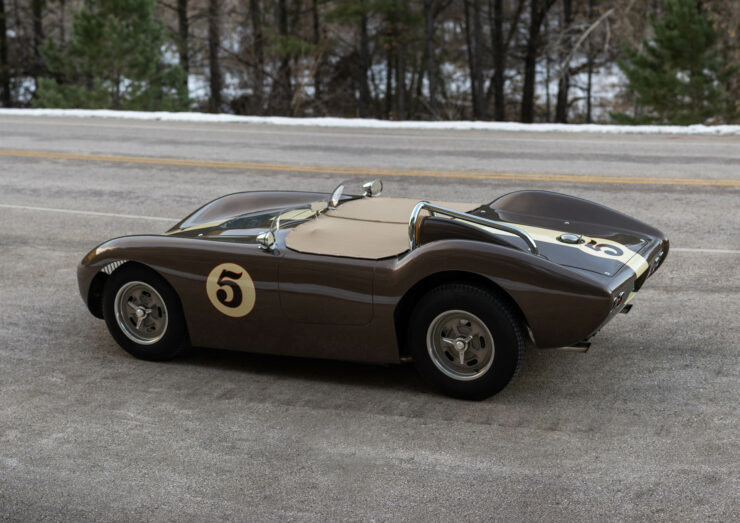
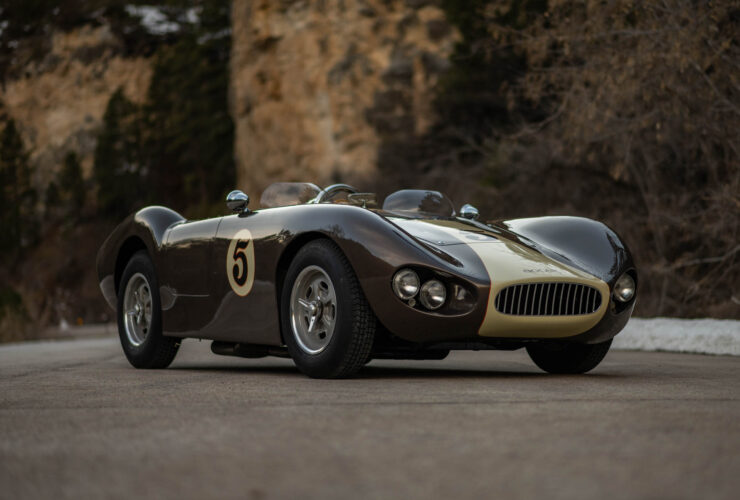
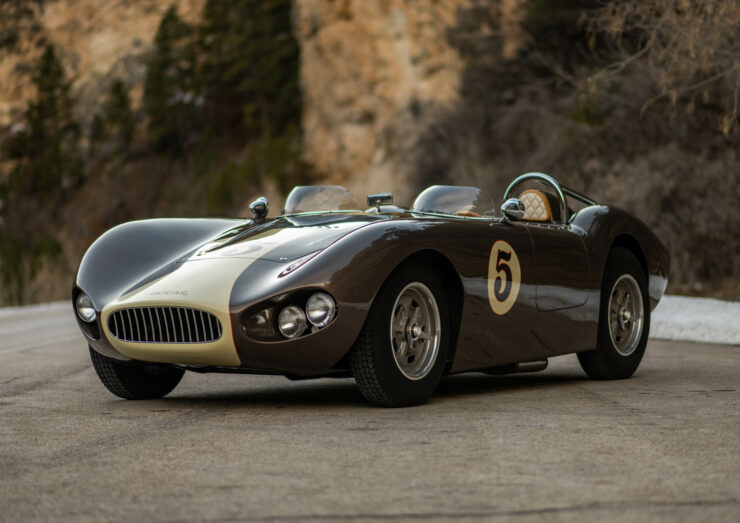
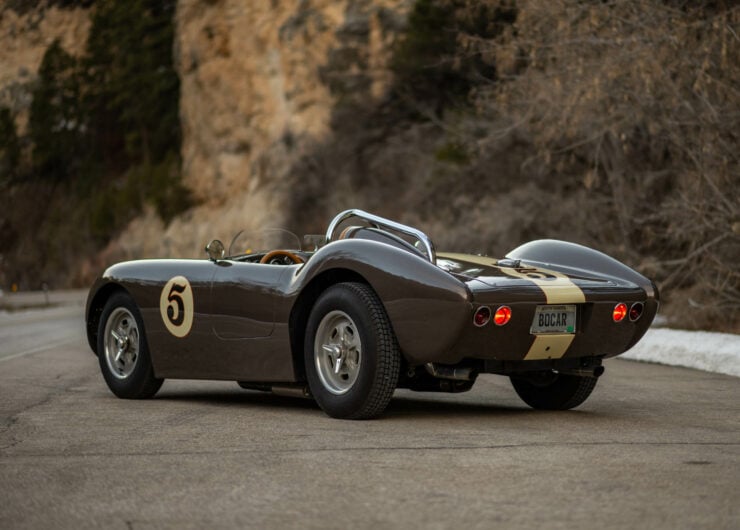
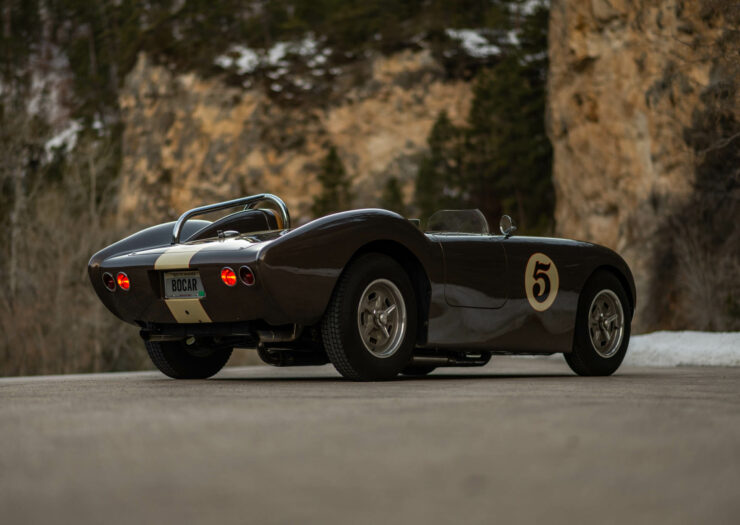
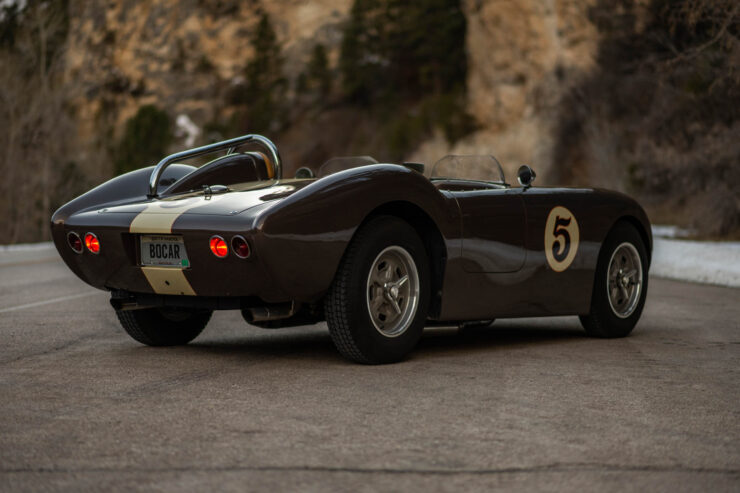
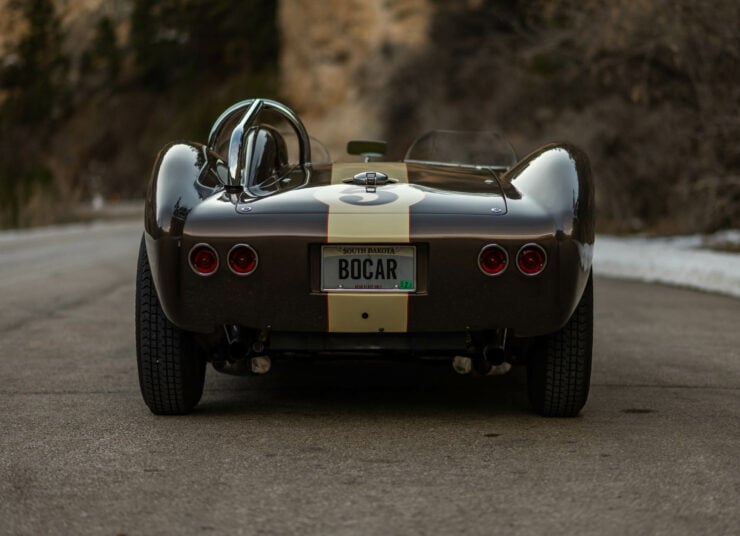
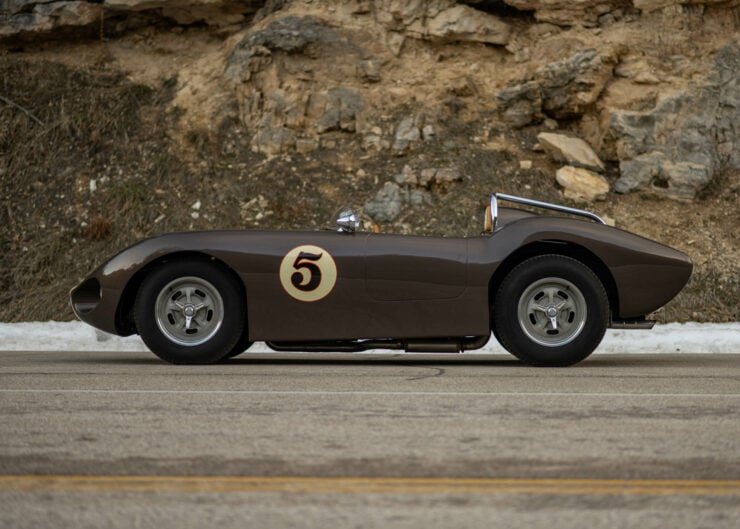
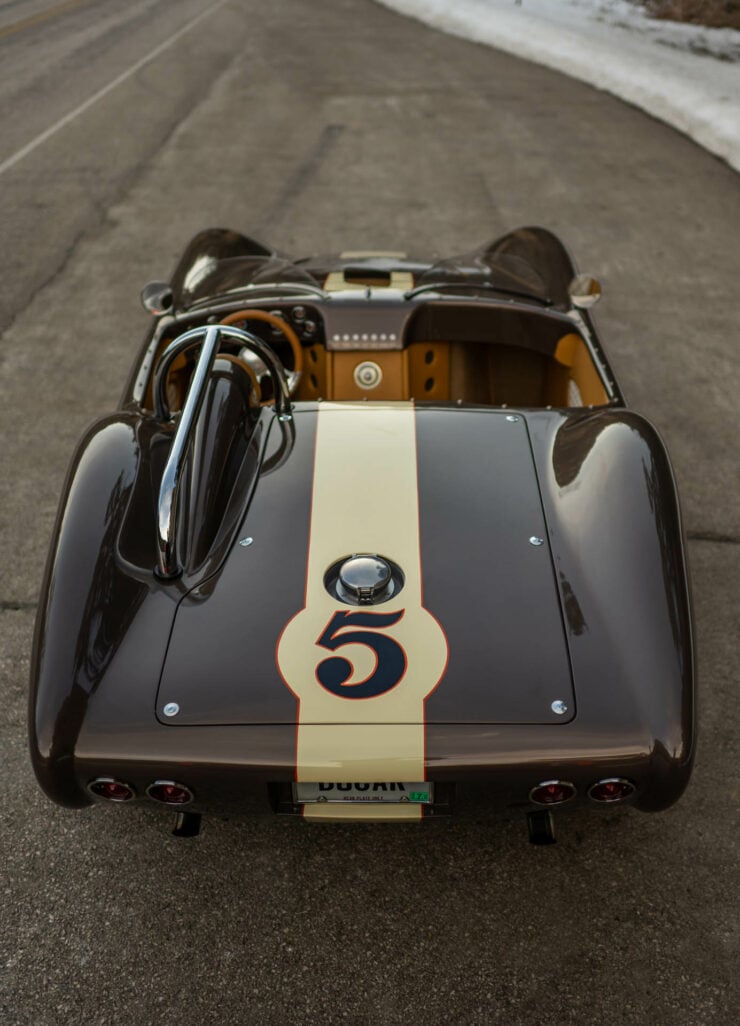
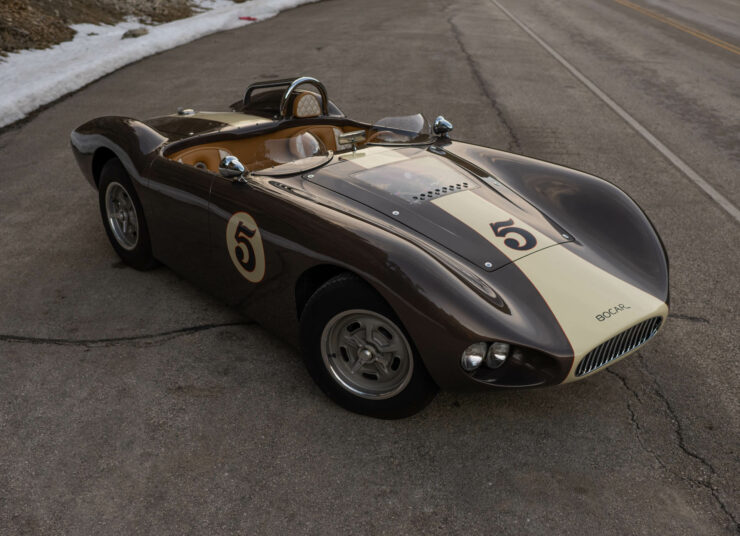
Images courtesy of Bring a Trailer

Articles that Ben has written have been covered on CNN, Popular Mechanics, Smithsonian Magazine, Road & Track Magazine, the official Pinterest blog, the official eBay Motors blog, BuzzFeed, Autoweek Magazine, Wired Magazine, Autoblog, Gear Patrol, Jalopnik, The Verge, and many more.
Silodrome was founded by Ben back in 2010, in the years since the site has grown to become a world leader in the alternative and vintage motoring sector, with well over a million monthly readers from around the world and many hundreds of thousands of followers on social media.

